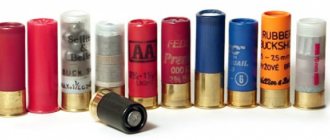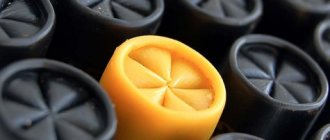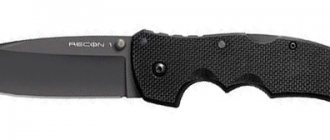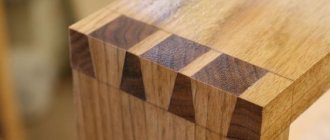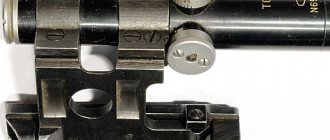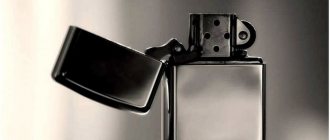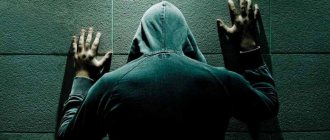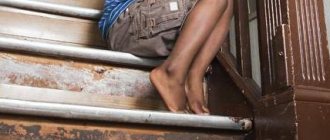Each hunter himself selects for himself the numbers of fractions convenient for hunting a particular animal or bird. Some people shoot at a goose with shot number 1, since it hits the head, while others use shot number 00, since it is more difficult to penetrate the dense feathers on the chest with one.
When choosing a shot, you also need to take into account the seasonality of hunting. In winter, the animal's plumage or fur is denser, making it difficult to penetrate. The usual distance to the target is approximately 35-40 meters.
| Fraction number | Diameter, mm | On whom |
| 12 (small) | 1,25 | Quail, snipe, snipe and other small birds |
| 11 (small) | 1,50 | |
| 10 (small) | 1,75 | |
| 9 (small) | 2 | |
| 8 (small) | 2,25 | |
| 7 (small) | 2,50 | Ducks, pheasants and other larger birds, teals |
| 6 (small) | 2,75 | |
| 5 (small) | 3 | |
| 4 (average) | 3,25 | Can be used on goose, hare, black grouse |
| 3 (average) | 3,50 | |
| 2 (average) | 3,75 | |
| 1(medium) | 4 | Hare, goose, fox, wood grouse. |
| 0 (large) | 4,25 | |
| 00 (large) | 4,50 | Larger animals such as roe deer, lynx, etc. Can be used on hare, goose |
| 000 (large) | 4,75 | |
| 0000 (large) | 5 |
The table shows the numbers of fractions, their diameter and who they are used for. The fraction pitch is 0.25 mm. As can already be seen, the higher the number of the fraction, the finer it is.
Buckshot
The shot is above 5mm. Necessary for hunting large animals, such as roe deer. It is recommended that the buckshot be kept in a container. There is a concept of matched buckshot. This is when buckshot is placed in layers in a cartridge and the shot follows each other. To achieve this, use cups for laying in rows. But manufacturers don’t bother too much about this issue and arrange it as they please.
How to choose a good cartridge
It is important to consider the characteristics of the gun. Depending on the standards of the country of origin, there may be different tolerances for barrel diameter. So, for Russia this value varies from 18.2 to 18.7 mm. For French weapons - 18.1-18.5 mm. You can decide on a specific cartridge only after zeroing.
Instructions for making a homemade crossbow and arrows for it
The following indicators are taken into account:
- By changing the distance to the target, analyze the sharpness - the depth of penetration of the shot (buckshot) into a dry wooden board. The optimal indicator is 4 charge diameters.
- The accuracy value must correspond to the declared value.
- The sleeve is removed without jamming or unnecessary effort.
The ratio of the mass of the charge to the weight of the gun is about 1/100. The pressure when firing should not be higher than normal. Particular attention is paid to the possibility of using Magnum charges. The pressure of powder gases for them can exceed 1040 bar, which is unacceptable for standard hunting rifles.
The best compatibility is the same country of origin of the gun and ammunition. When choosing a cartridge, beginners are advised to take the advice of professional hunters. They will help you select ammunition based on the actual characteristics of the gun.
Cartridges with container
The container is a plastic shell for shot. Its purpose is simple - after a shot, it holds the shot in the pile for some time and prevents it from scattering, which gives more accuracy. Greater accuracy increases the chances of a successful shot, especially at a distance above 35-40 meters, since more pellets will hit the target.
12 gauge cartridge. Smoothbore cartridges. How to choose? (Guide to choose from)
Contents of the article (click to view)
Smoothbore cartridges
At first glance, the topic of 12-gauge smoothbore cartridges is not at all a subject for a printed article. Everything here has long been said by numerous weapons gurus and polished by leading cartridge companies to such a degree of perfection that the average consumer doesn’t have to bother.
And yet, questions arise. Moreover, the main stream of questions from buyers comes when there is a wide choice on display, when you need to buy several packs of 12-gauge cartridges for different hunts, when everyone is standing in a tight line of like-minded colleagues in anticipation of the upcoming joys of hunting. That is, on the eve of the opening of the hunt and during the hunting season. Sales consultants at this time, naturally, work more as salespeople than as consultants, and the store is more reminiscent of a tire shop during the first frost than a decent, respectable company.
Magnet and semi-magnum
The main feature of such cartridges is increased power. Conventional cartridges give a pressure of 600-700 bar, and magnum 1050 bar. You also need to know that the cartridge length is 76 mm, which is not for all guns. Typically, shotguns have a 70mm chamber. When purchasing such cartridges, you need to know whether your gun will withstand this pressure, since not all guns are designed to withstand such pressure. After the shot you can damage it.
The difference between a semi-magnum is the length of the cartridge. It is 70mm, but produces the same 1050 bar. The point is gunpowder, which produces more pressure with smaller quantities. And since there is less gunpowder, there is more space for the charge.
Popular ammo manufacturers
- Glavpatron
- SCM
- Fetter
- Magnum
- Clover
Share
Types of 12 gauge cartridges. Types of cartridges and shot numbers for 12 gauge
12 gauge bullets are quite varied. It is important for a hunter to know in what conditions the hunt will take place and what kind of animal he wants to kill in order to choose the right modification of the bullet. Bullets are classified according to various criteria:
- structural component: switches; turbine; round.
- manufacturing material. They use steel, brass, lead.
- presence of sheath: lead without sheath; with an incomplete shell - semi-shell; lead with a sheath of steel or brass;
- level of destruction upon impact: expansive; non-expansive;
Round bullets
Spherical (ball) bullet
It is considered the most ancient. In terms of design, this is a regular ball, the diameter of which can vary. It is made both in the factory and with your own hands. This model can be:
- caliber;
- sub-caliber.
The material for the manufacture of the caliber modification is pure lead. Its physical properties provide the model with minimal friction when passing along the barrel of a weapon.
Bullet Sputnik
It is a type of round. Used for shotguns with choke barrels. The design of this model provides for the presence of centering belts and point tides.
The disadvantage of this model in factory production is its low weight.
There may also be problems with shooting accuracy. This is caused by the design of the model, the belts, protrusions and recesses of which provide additional air resistance.
Bullet Tandem
The model belongs to the sub-caliber category. Manufacturing material – steel. Recommended for use when shooting at short distances.
In its original form, the “Tandem” bullet was a thick-walled polyethylene container with two steel balls placed in it from the front (hence the name “tandem”). The balls were pressed, so that the bullet traveled “assembled” to the target. Research carried out later led to optimization of the design and the replacement of two spherical elements with one cylindrical one.
Arrow bullets
Polev's bullet
The Polev bullet was created in the 80s in the Soviet Union. It is a striking element made of lead of small diameter, which is mounted on a plastic shank. Their head part is equipped with plastic containers, which are separated after leaving the barrel. This was done to ensure better cross-country ability along the gun channel.
Used for hunting large animals: bear, wild boar, elk. There are steel and brass variations, but they are practically not common.
It has a number of undeniable advantages:
- Allows you to confidently hit a target at a distance of up to 100-150 meters.
- Has excellent speed.
- Characterized by a high level of muzzle energy.
VVOO-Ilyin bullet
A model of domestic production, designed by an engineer for the management of production enterprises of the Central Council of the All-Army Military Hunt
no one's community by G. Ilyin.
It has two parts: main and tail. The main one is made in the shape of a monolithic cylinder and has a conically pointed appearance in front. Flat ribs are located along the axis of symmetry.
At the bottom of the bullet there is a thin annular guide belt. The composite tail section is represented by a simple polyethylene three-bladed stabilizer pressed into the body of the bullet. The shank at the top has a centering belt, the stabilizer blades are oriented along the axis of the bullet.
Bullet Vyatka
The bullet body has a teardrop shape, 6 centering ribs, an internal hole and a central rod. The polyethylene stabilizer consists of a cylinder with a narrow sealing belt. The end of the rod is flared and this ensures the integrity of the bullet elements during its flight.
The Vyatka bullet is convenient and easy to load; The polyethylene belt provides reliable sealing when firing. The advantages of the Vyatka bullet are increased flight speed, better flight stability, better accuracy, increased penetration and expansion, and reduced ability to ricochet.
Bullet Diablo Lyman
The model is similar to pneumatic bullets. The model belongs to the sub-caliber category. Its design ensures a low percentage of rebounds.
The flat nose of the bullet reduces the chance of ricochet and creates neat round holes in targets. The presence of a chamfer allows the cartridges to be closed with a “star”, which very few bullets can tolerate, especially with a flat head. This type of closure, by the way, is recommended by the manufacturer itself.
Turbine bullets
Compared to round ones, this type has the most advanced design. The models are distinguished by the best performance in accuracy and consistency of combat. This is influenced by their structure, which ensures very fast rotation in flight. Its structure is monolithic. The body is made of lead, the head is made heavier than the tail.
Bullet "Ideal"
A classic representative of turbine bullets. Monolithic, caliber, expansive bullet cast from lead. The body of the bullet is formed by two cylinders - a thicker and shorter one in the head, a longer and thinner one in the tail. The cylinders are connected to each other in a ledge manner. In the head of the bullet, there are two leading bands at the top and bottom, the third is located on the conically widened base of the bullet. In the center of the bullet there is a longitudinal conical channel extended at the front, in which there are blades inclined to the longitudinal axis of the bullet.
Mayer's bullet
This model is the most popular among hunters from the turbine category. Its technical feature is that the Mayer bullet, leaving the barrel of the weapon, already begins to rotate. The body has two cylinders connected to each other by a conical transition. The target combat distance is 130-160 m. This model is characterized by a high level of lethality.
For high shooting accuracy, it is necessary to stabilize the bullet as much as possible in flight. This can be achieved by applying low aerodynamic fins placed in a spiral, or blades on a stabilizer shank.
Bullet "Strela" (Shituev bullet)
It looks like an aerial bomb. Produced since 1989 by the Krasnozavodsk Chemical Plant. It has a swept profile with six tails. The weight of a 12-gauge bullet is 32+1 g. It is produced enclosed in a container consisting of two polyethylene shells in the form of half-cylinders. The profile of the inner surface of the container is made to coincide with the outer profile of the Strela bullet; the external profile has the shape of six truncated cones connected to each other; the diameter and angle of inclination of the forming cones are selected to ensure good obturation; the durable bottom part ensures that the pressure of the powder gases is absorbed without deformation or burnouts.
arrow-turbine bullets
Brenneke bullet.
This model was created at the beginning of the 20th century in Germany. The Brenneke bullet has angled ribs that cause it to rotate when fired. Belongs to the caliber category. This means that the containers do not interfere with the contact between the inner surface of the weapon barrel and the ribs themselves.
In comparison with the Poleva model, it has a significant drawback - the shot accuracy is worse.
It also has a number of similar, more simplified counterparts produced in different parts of the continent. The so-called "cap bullets"
:
Foster's Bullet
Bullet "PALLA"
Bullet "Strike"
Gualandi bullet
The Gualandi bullet is a pointer-turbine type bullet, penetrating, non-expansive in its principle of action.
By design, the Gualandi bullet has a heavy, massive front part made of lead and a lightweight plastic shank-shank.
The bullet head is made of carbide, made of lead with the addition of 5% antimony; in terms of hardness it is close to the hardness of sports shot.
The stabilizer shank is rigidly connected to the lead head of the bullet, does not separate at the moment of firing and reliably stabilizes the bullet along the flight path.
Ddupleks bullet.
Monolithic, composite, two-component, caliber, expansive pointer-type bullet. A massive steel core of complex shape is molded into polymer, forming a single ballistic shape of a monolithic bullet. In the head part there is a polymer leading belt and a deep funnel-shaped expansive recess. The tail of the bullet is a caliber, durable polymer, cylindrical stabilizer.
When meeting a target, the head part splits into 6 steel beams. At short distances from the object of hunting, the high speed of the bullet should ensure reliable opening of the steel petals, a significant increase in the wound channel, that is, the highest stopping effect.
As you can see, there are quite a lot of variations in the choice of 12-gauge bullets for smooth-bore weapons today.
